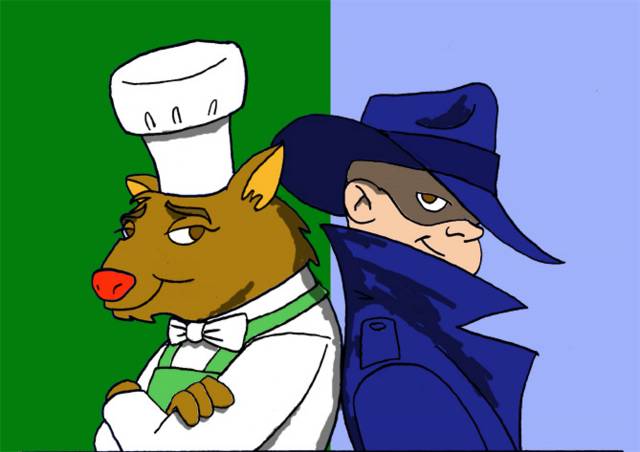I really have to admit -- this was the first time I was ever tempted to accuse Personal Trainer - Cooking of base fraud. Seriously, when you look at the ingredient list, if you know anything at all about traditional "chili con carne" you'd have a hard time wondering how this particular version deserves the name.
However . . .
We have to keep in mind that the recipes here were developed by the Tsuji Academy, whose main function in society is to teach Japanese homemakers (and other foodservice professionals) how to cook. This is, therefore, a cultural artifact -- in the same way that a McDonald's hamburger, in Tokyo, isn't going to taste the same as a McDonald's hamburger in Des Moines. This is the Japanese interpretation of a typical American dish, tamed for the palates of Japanese schoolchildren and citizens who have a rather sensitive palate. (What the Japanese consider "suicide hot," we would call "moderately spiced." Keep that in mind.)
Ingredients: Perhaps I should explain to you what this recipe doesn't have, and you can make a judgement that way. What it doesn't have: Cumin. And chili peppers, either in fresh or powdered form.
These two elements, really, are what make a Western chili, and are far more important than even the argument about "beans / no beans." Cumin provides the "backbone" of traditional Western chili, no heat in and of itself but the point on which flavours can mount. And "chili" without the actual "chili" itself?
Which is not to say that there aren't spices for this recipe. There is paprika. And here, again, PTC doesn't get too specific, because there are two types of paprika on the market now: sweet, and hot. Since this is chili after all, and since I've got it to start with, I opted for the hot one. There's also cayenne, and if I wanted to up the heat factor to Western tolerances I'd double the amount recommended for both.
What else is there? Well, there's carrot, which isn't that unusual. There's also "frankfurter sausages" (a.k.a. hot dogs), which will raise some eyebrows; however, considering that such a thing as the chili dog does exist, and considering that hot dogs are actually quite popular with Japanese children (homemakers do make fake octopi out of them), it makes a certain amount of sense. There's also white wine, which gives the impression that the Tsuji Academy essentially thinks that chili starts out as a French soup. (And they use chicken stock, as well.)
Techniques: I did learn my lesson from previous recipes, which is that you shouldn't trust the recommendations that PTC has for cooking utensils. Here, the recipe called for a skillet. Unless you've got a real big one, trust me: a Dutch oven makes better sense.
The process starts out as a mirepoix: you cook finely chopped onion, carrot and garlic until tender, then add ground beef, tomatoes (canned, with canning liquid), white wine, bay leaves and flour (for a thickener). Put in broth, add beans and sliced-up weiners, cook for at least 15 minutes, spice with cayenne, paprika, salt and pepper and serve. No particularly fanciful techniques are called for, which is the way it should be for Western chili; but this is the type of recipe where long stewing won't hurt anything.
Results: Well, I'll be honest. What I'm tasting here is a bean-and-wiener stew with ground beef. I cannot honestly call this a true chili, though I might justify the moniker by saying it's Japanese chili. You really miss the cumin and the peppers with this one. It's still edible, and I might serve it to schoolkids, but no way I take this to the International Chili Society as a potential entry.
There are better chili recipes out there; even one from a comic book. I'm afraid I'll have to call this one a fail.
Subscribe to:
Post Comments (Atom)

No comments:
Post a Comment